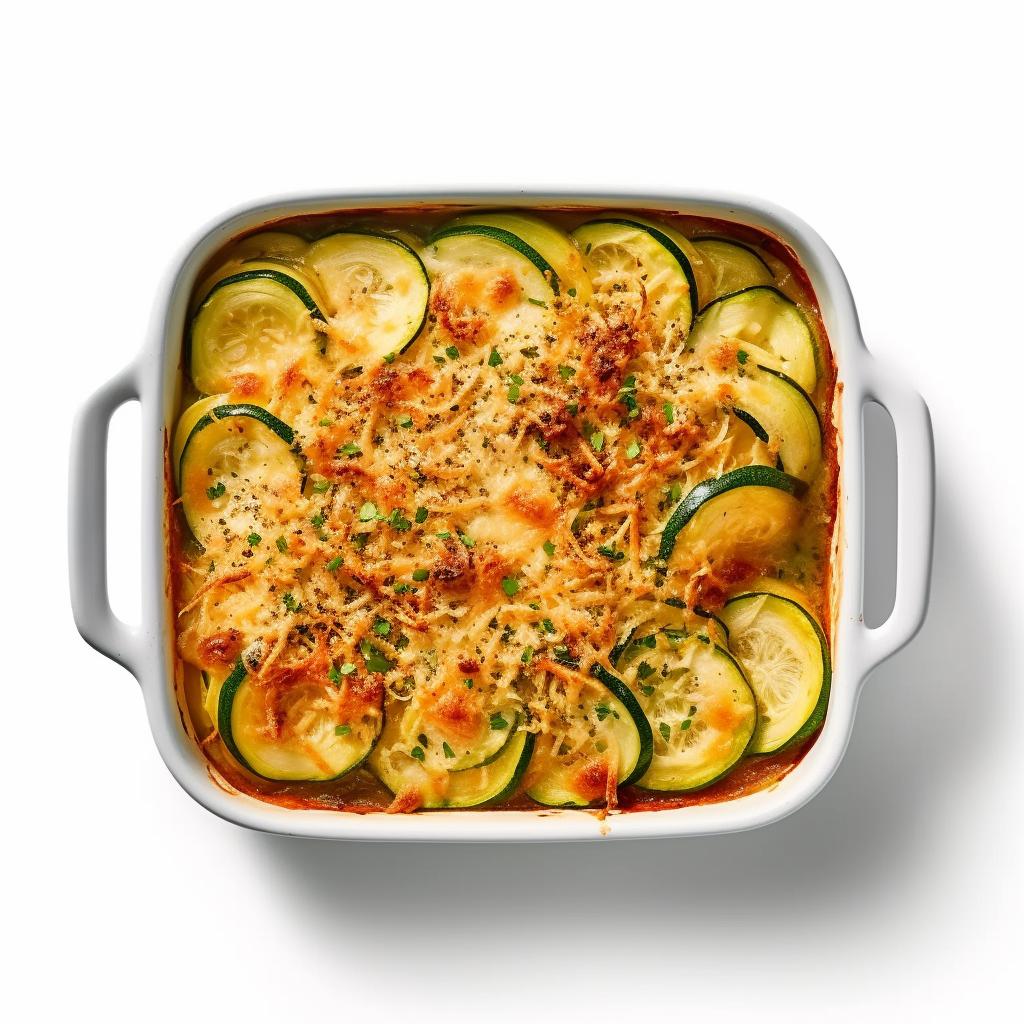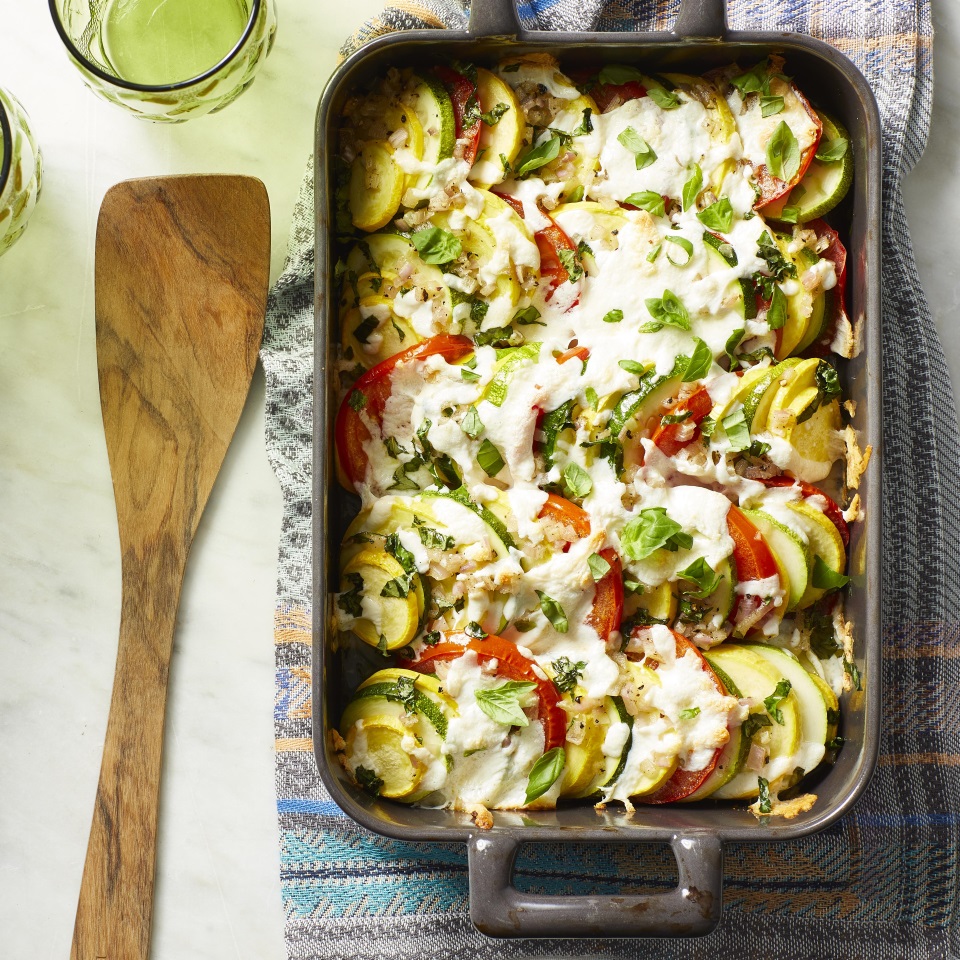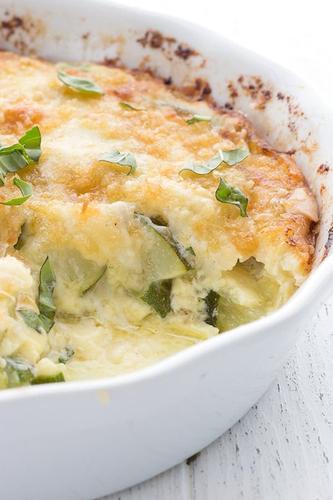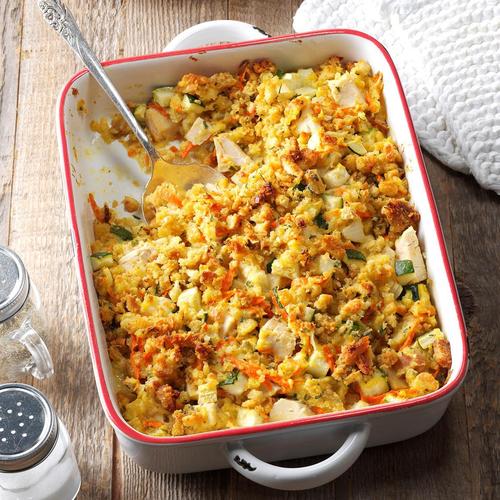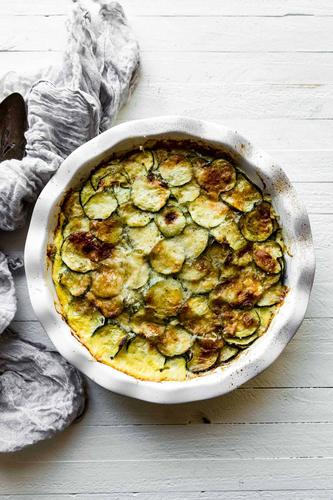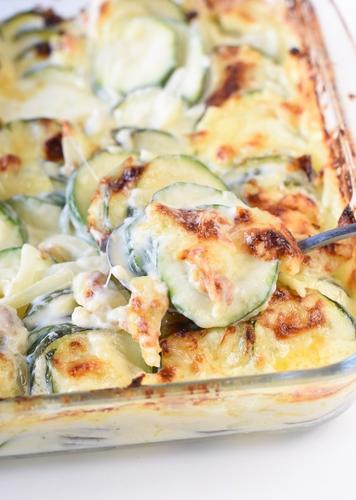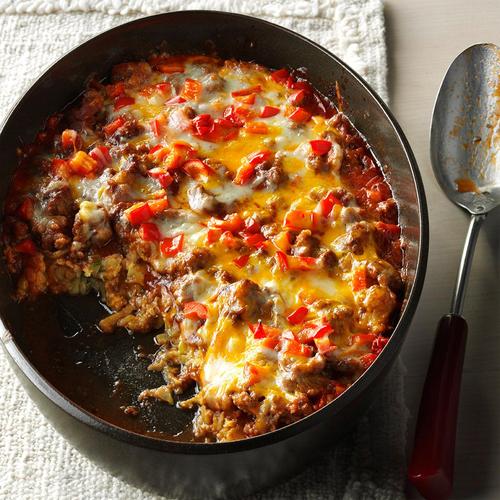Zucchini Casserole
Zucchini Casserole is an enjoyable, healthy, and versatile dish that home cooks can easily prepare. It's a savory mixture of grated or chopped zucchini, along with other vegetables, cheese, and sometimes bread crumbs for added crunch. This dish is abundant in nutrients and the zucchini provides a light, delicate flavor that pairs well with a variety of other ingredients.
Experimenting with this dish opens avenues to many creative variations. It is excellent as a vegetarian main course or as a side dish for your favorite grilled meats or poultry. It's a perfect concoction for vegetable lovers aiming to include a healthy choice in their menus.
18%
CARBS
47%
FAT
34%
PROTEIN
Featured Articles
22 Recipes for Zucchini Casserole
Zucchini Casserole FAQ
What is a zucchini casserole?
What ingredients are needed for a zucchini casserole?
How do I prepare the zucchini for the casserole?
What cooking techniques are best for making a zucchini casserole?
Can I make substitutions to the recipe based on my dietary preferences?
How can I adjust the consistency or texture of the casserole?
What are some common mistakes to avoid when making a zucchini casserole?
How should I store leftovers of the zucchini casserole?
Expiration & Storage Tips
When does Zucchini Casserole expire?
A homemade Zucchini Casserole is best when eaten the same day it was made. However, if stored correctly, it can last around 3-4 days in the refrigerator. If you wish to freeze the casserole for later use, it can be stored up to 3 months in the freezer.
How do you tell if Zucchini Casserole is bad?
If your Zucchini Casserole has gone bad, there are a few clear signs to look for. The easiest sign is changes in smell. If you notice a sour, rotten, or generally unpleasant smell, it's best not to eat it. Also, if the texture has become extremely soggy or if there are visible mold spots, those are clear signs it has spoiled.
Tips for storing Zucchini Casserole to extend shelf life
• Store your Zucchini Casserole in a tight-lid container in the refrigerator. Always try to get the lid on as soon as it has cooled to room temperature to avoid bacteria growth.
• If you've made a large amount and you want to freeze some portions for later, allow it to completely cool before transferring it to a freezer-safe container. Be sure to leave a bit of space at the top as food expands when it is frozen.
• When freezing, it's a good idea to portion out your casserole so you can defrost only what you'll eat in a single sitting. Defrost overnight in the fridge or using the defrost function on your microwave.
• Wrap the casserole dish with plastic wrap and then foil before freezing. The double layer helps prevent freezer burn.
• Label and date your container before placing it in the freezer, so you can keep track of how long it has been stored.
• To reheat, ensure it’s fully defrosted and then warm it in the oven at 350°F until it’s heated through. This should, ideally, take about 20-30 minutes.
Health Info
Macros
6g
CARBS
17g
FAT
12g
PROTEIN
Allowed on these diets
LOW FAT
HIGH CALCIUM
VEGETARIAN
MEDITERRANEAN
GLUTEN FREE
Contains these allergens
MILK
